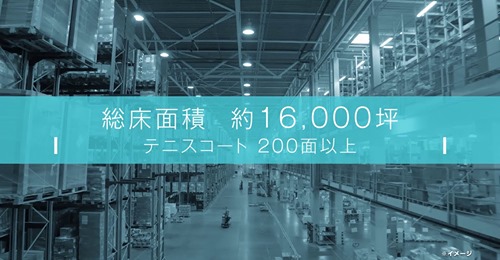
Below is an in-depth technical article on cylindrical roller bearings—their characteristics, operating principles, and applications in modern mechanical engineering.
1. Introduction: What Are Cylindrical Roller Bearings?
Cylindrical roller bearings are a type of bearing primarily composed of cylindrical rollers arranged between two main rings: the inner ring and the outer ring. This design efficiently transmits loads primarily in the direction perpendicular to the shaft (radial load) thanks to the large contact area between the rollers and the bearing races. Therefore, they are commonly used in positions subjected to heavy loads, where stable operation and long service life are required.
2. Construction and Operating Principles
a. Construction
A basic cylindrical roller bearing consists of the following main components:
- Inner and Outer Rings: Two circular rings machined with smooth surfaces featuring special grooves to house the rollers. The inner ring is typically mounted on the rotating shaft, while the outer ring is fixed to the housing or machine structure.
- Cylindrical Rollers: Cylindrical-shaped rolling elements evenly distributed between the two rings. This design creates a large contact surface, allowing the load to be evenly distributed during operation.
- Cage (Roller Retainer): A component that separates and maintains the position of the rollers, preventing them from colliding during high-speed operation.
- Lubrication System: To reduce friction and wear, cylindrical roller bearings are usually lubricated with special grease or oil and are often designed with seals to retain the lubricant inside.
b. Operating Principles
When a cylindrical roller bearing is mounted in a rotating system, the load is transferred from the outer ring through the rollers to the inner ring. Due to the design—with contact surfaces along the length of the rollers—the radial load is evenly distributed, thereby reducing the stress at each contact point. This helps lower friction, reduce heat generation, and extend the bearing's service life. Thanks to its simple yet effective structure, the cylindrical roller bearing can also handle high loads at medium to high rotational speeds while experiencing minimal deformation under heavy loads.
3. Key Technical Features
- High Load Capacity: Due to the increased contact area between the rollers and the raceways, cylindrical roller bearings can perform well under high radial loads.
- High Durability: Their robust construction, combined with an effective lubrication system, ensures stable, long-term operation by minimizing wear and damage.
- Simple yet Precise Design: The cylindrical rollers are manufactured with uniform dimensions and spacing to ensure even load distribution. This increases functional efficiency while reducing energy losses due to friction.
- Capability for High-Speed Operation: With an optimized structure for load distribution, many cylindrical roller bearings are designed to operate stably in systems that require high rotational speeds.
4. Applications of Cylindrical Roller Bearings
Cylindrical roller bearings are widely used across various industries due to their high load capacity and durability. Some typical applications include:
- Industrial Machinery: Used in heavy industrial equipment such as lathes, milling machines, and presses to reduce friction and improve operational efficiency.
- Drive Systems: In mechanical drive systems such as gearboxes and electric motors, cylindrical roller bearings ensure smooth rotation and reduce wear on components.
- Transportation: For example, they are used in the axle assemblies of trains, trucks, and buses, where stability and high durability are critical under heavy loads and harsh operating conditions.
- Pumps and Compressors: Applied in the bearings of pumps, mixers, etc., to maintain performance when faced with continuous loading.
In addition, with the development of technology, cylindrical roller bearings are increasingly integrated with sensor systems that monitor operating conditions. This enables predictive maintenance, ensures continuous operation, and helps prevent unexpected failures.
5. Selection and Maintenance of Cylindrical Roller Bearings
a. Selection Criteria
- Load and Speed: Determine the required load capacity and rotational speed of the system to choose a bearing that can reliably withstand the load and operate stably.
- Quality and Materials: Select bearings manufactured from high-quality materials that offer excellent wear and corrosion resistance, and that are produced under precise machining standards.
- Lubrication System: Ensure the bearing is properly lubricated and protected (e.g., with shields or seals) to prevent the ingress of dust and other harmful contaminants.
b. Maintenance and Inspection
- Regular Lubrication: Periodic lubrication is essential to maintain performance by reducing friction and operating temperature.
- Monitoring Wear and Vibration: Use inspection equipment to detect early signs of wear or misalignment so that timely maintenance can be performed.
- Cleaning: Remove dust, moisture, and any unwanted substances to maintain a clean operating environment for the bearing.
6. Conclusion
Cylindrical roller bearings are an essential component in many modern mechanical systems, valued for their high radial load capacity, durability, and stable performance. With their simple yet effective design, they not only help reduce friction and wear but also contribute to the continuous and safe operation of machinery. The proper selection and maintenance of these bearings are crucial factors determining the lifespan and efficiency of the entire machine system.
If you are interested in exploring deeper topics on bearing technology, automation in mechanical engineering, or modern maintenance solutions for industrial machinery, be sure to read additional in-depth articles to fully understand the current technological trends!
Where can I purchase these cylindrical roller bearings? QTE TECHNOLOGIES is your international MRO supplier for these tools. We offer a comprehensive range of products to customers in over 180 countries. You can also contact us anytime via phone, WhatsApp, or email.
Post Author By QTE Technologies Editorial Staff (with a solid background in both technical and creative writing - accumulated 15+ years of experience).




